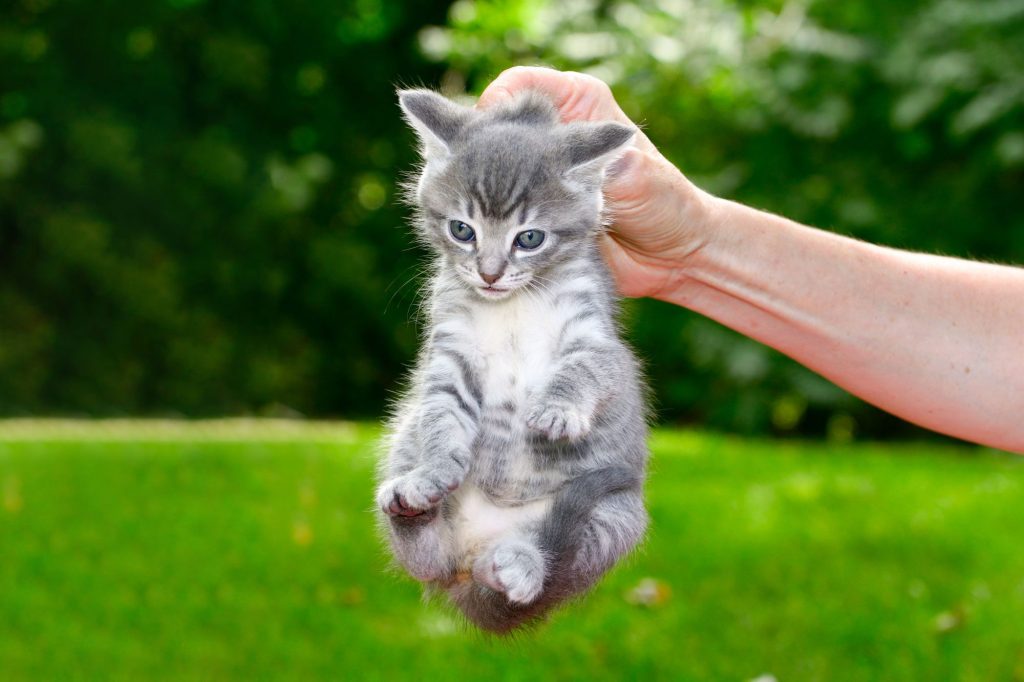Effective Strategies to Correct Aggressiveness in Cats

Understanding Feline Aggressiveness
Aggressiveness in cats may seem baffling at times, but for pet owners, managing this behavior is crucial for ensuring a peaceful home environment. Not only does it impact the cat’s mental and emotional health, but it can also pose risks to human family members and other furry companions. Recognizing that this behavior stems from various underlying factors is key to applying effective corrective strategies.
Common Triggers of Aggression
Identifying the root causes of aggression can be helpful to both cats and their owners. Several factors contribute to aggressive displays:
- Fear or anxiety: Cats are instinctually wired to protect themselves. When they perceive a threat, whether from loud noises, unfamiliar environments, or other pets, they may resort to aggression as a defense mechanism. For example, a cat exposed to a vacuum cleaner for the first time may react by hissing and swatting. Looking out for body language cues, such as flattened ears or a puffed-up tail, can help owners gauge when their cat is feeling vulnerable.
- Territorial behavior: Cats are inherently territorial creatures. They often feel the need to defend their space from perceived intruders, which may include new pets or even unfamiliar humans. If a neighbor’s cat enters your yard, your cat may react aggressively from the safety of the window, showcasing its protective nature. Understanding this behavior helps owners create a more harmonious environment with boundaries that respect each pet’s space.
- Play aggression: Particularly common in cats under three years old, play aggression may arise when a cat engages in rough play. These playful antics can sometimes escalate into actual aggression, as the cat gets overly excited. Engaging a kitten with interactive toys like feather wands or laser pointers can redirect their predatory instincts and prevent unintended scratching or biting.
By recognizing these triggers, owners can start to unravel the puzzling behaviors their feline friends exhibit, paving the way for effective strategies to reduce aggressiveness.
Importance of Behavioral Training
Addressing feline aggression requires a commitment to behavioral training techniques that foster understanding and empathy. Here are some strategies that can significantly help:
- Positive reinforcement: Rewarding good behavior can lead to a happier and more well-adjusted cat. For instance, if your cat responds positively to being called, offering treats and praise can reinforce this behavior. This approach not only encourages better habits but also strengthens the human-animal bond.
- Providing outlets: Ensuring your cat has access to engaging toys, scratching posts, and climbing structures can alleviate built-up stress and pent-up energy. Regularly rotating toys to keep things fresh can also stimulate play and reduce aggressive tendencies. For example, consider incorporating puzzle feeders that reward mental engagement with treats, curbing frustration.
- Seeking professional help: When in doubt, consulting with a veterinarian or a certified animal behaviorist can provide tailored advice for specific aggressiveness issues. They can assess the cat’s environment and behavior, and propose solutions that fit your unique situation. Sometimes, medication may be necessary alongside behavioral training to treat underlying anxiety issues.
With consistent and informed approaches to intervention, pet owners can cultivate a peaceful home environment while simultaneously enhancing their connection with their feline companions. Understanding and addressing aggressiveness not only improves daily interactions but also enriches the overall quality of life for both cats and their owners.

DISCOVER MORE: Click here to learn how to make pet adoption easier
Effective Strategies to Manage Aggressiveness in Cats
Once pet owners have identified the triggers behind their cat’s aggressive behaviors, implementing effective strategies becomes crucial in correcting this issue. Understanding the nuanced world of feline behavior can lead to deeper insights into an animal’s psyche and create pathways to a harmonious household. Here, we delve into targeted approaches that can effectively manage and reduce aggressiveness in cats.
Adjusting the Environment
Creating a safe and enriching environment for your cat can help minimize sources of stress that trigger aggression. Here are several strategies:
- Safe Spaces: Designate comfortable areas within your home where your cat can retreat when feeling overwhelmed. Cat trees, cozy beds, or hidey holes offer security and a sense of ownership in their territory.
- Controlled Introductions: If you have multiple cats or are introducing a new pet, do so gradually. A slow introduction can prevent a territorial response. Utilize separate spaces initially and allow for scent swapping through bedding or toys to ease the transition.
- Noise Management: As cats may be sensitive to loud noises, consider strategies for noise reduction. This could involve using white noise machines or creating quiet zones in your home where your cat can seek refuge from disturbances.
Engaging with Play and Enrichment
Addressing play aggression is particularly important for younger cats and kittens. Cat owners can encourage appropriate play behaviors through engagement and interactive activities:
- Interactive Toys: Toys that mimic prey movements, such as feather wands or laser pointers, can channel predatory instincts into productive play sessions. These toys provide exercise and mental stimulation, which can reduce aggressive tendencies derived from boredom or excess energy.
- Scheduled Playtime: Daily routines that include dedicated playtime can establish a positive outlet for pent-up energy. Regular play sessions not only help interactively connect with your cat but also serve to alleviate signs of aggression that stem from boredom.
- Puzzle Feeders: Incorporating puzzle feeders can serve dual purposes of mental stimulation and slow feeding. This method designates feeding as a fun, interactive task rather than a rapid consumption event, thus decreasing anxiety that could lead to aggression during mealtime.
Incorporating these strategies into an owner’s routine can not only address immediate aggression concerns but also promote long-term positive behavior in cats. By understanding their feline companions through both environmental adjustments and engaging activities, pet owners can foster healthier, calmer relationships. Continued exploration and flexibility in these techniques may lead to tailored solutions that best fit individual cats, paving the way to a peaceful coexistence.
| Category | Details |
|---|---|
| Behavioral Training | Utilizing positive reinforcement techniques to encourage desired behaviors while redirecting aggression. |
| Understanding Triggers | Identifying specific situations or stimuli that provoke aggressive behavior in cats, aiding in tailored interventions. |
| Environmental Enrichment | Implementing toys, scratching posts, and interactive playtime to create a stimulating environment that reduces anxiety and aggression. |
| Veterinary Consultation | Seeking professional advice to rule out underlying health issues or pain that may contribute to aggressive behaviors. |
Each of these categories plays a crucial role in addressing the issue of aggression in cats. Behavioral training not only helps modify unacceptable behaviors but also strengthens the bond between the cat and its owner. By understanding triggers, owners become more adept at mitigating those situations before they escalate into aggression.Additionally, providing environmental enrichment encourages natural behaviors, lessening frustration and restlessness that often lead to aggressive outbursts. Implementing interactive toys and ensuring ample playtime allows cats to expend excess energy in a positive manner. Finally, consulting with a veterinarian offers invaluable insights into whether aggression stems from a physical ailment rather than behavioral issues, ensuring a holistic approach to the problem. These strategies not only foster a peaceful home environment but also enhance the overall well-being of the cat, making understanding and addressing aggressiveness a vital part of responsible pet ownership. Each method invites further exploration into specialized training techniques or behavioral studies that can provide deeper insights into this complex issue.
DIVE DEEPER: Click here to learn more
Behavioral Modification Techniques
Beyond environmental adjustments and engaging activities, implementing behavioral modification techniques is a pivotal aspect of managing feline aggressiveness. These strategies focus on altering your cat’s behavioral responses through consistent training and positive reinforcement. Understanding these methods can empower pet owners to create a calmer, more balanced home environment.
Positive Reinforcement
One of the most effective ways to encourage desired behaviors and diminish aggressive tendencies is through positive reinforcement. This technique involves rewarding your cat for calm behaviors rather than punishing them for aggression.
- Use Treats Wisely: Whenever your cat displays a calm and non-aggressive demeanor, reward them with treats or praise. This could be during a moment of peaceful play, when they interact positively with other pets, or even when they simply respond to a peaceful petting session.
- Clicker Training: This method employs the use of a clicker to mark desired behaviors instantly. For instance, if your cat sits quietly while you approach, click and offer a treat. The click serves as a cue, helping your cat learn to associate being calm with positive outcomes.
Identifying and Managing Aggression Triggers
Understanding specific triggers that lead to aggressive behavior is crucial for effective management. Observational skills can play a vital role in pinpointing these triggers:
- Monitor Body Language: Pay close attention to your cat’s body language, including their ears, tail positioning, and stance. Signs like dilated pupils, flattened ears, and tail twitching often indicate agitation and can inform preemptive actions to avoid escalation.
- Reduce Stressors: Once triggers are identified, take steps to minimize or manage these stressors. For example, if your cat becomes aggressive during grooming, consider introducing short, positive grooming sessions gradually, coupled with rewards to create a more positive association with the process.
Professional Help and Resources
Sometimes, the complexities of aggressive behavior go beyond the scope of DIY strategies. In such cases, seeking professional help may be essential. Various resources help guide cat owners through these challenges:
- Veterinary Consultation: Consult your vet to rule out any underlying medical conditions that could contribute to aggression. Pain or discomfort from health issues can lead to unpredictable behavior in cats.
- Animal Behaviorists: Hiring a professional animal behaviorist can provide personalized strategies tailored to your individual cat’s needs. These experts can assess your cat’s behavior in detail, offering comprehensive plans for improvement.
- Educational Resources: Consider reading books or attending workshops focused on feline behavior and training. Educational resources can provide insights that open up channels for better communication and understanding of your cat’s needs.
By embracing a combination of behavioral modification techniques and professional guidance, pet owners can develop a well-rounded approach to correcting aggressiveness in cats. This multifaceted strategy not only aids in mitigating aggressive behaviors but also fosters an environment conducive to emotional health and stability for both the cat and their human companions.
DISCOVER MORE: Click here for effective training tips
Conclusion
In summary, addressing feline aggressiveness requires a comprehensive understanding of your cat’s behavior and a commitment to implementing effective strategies. By embracing environmental adjustments, engaging activities, and behavioral modification techniques, pet owners can significantly reduce aggression and foster positive behaviors in their cats. Utilizing methods like positive reinforcement creates a nurturing atmosphere where calmness is rewarded, reinforcing desirable behavior over time.
Additionally, being vigilant in identifying and managing aggression triggers can prevent potential flare-ups, leading to a more harmonious relationship between your cat and its environment. By paying attention to body language and known stressors, owners are equipped to intervene before aggression escalates. Furthermore, when aggression appears more complex or overwhelming, seeking assistance from professionals—such as veterinarians and animal behaviorists—can yield thorough insights and tailored plans to address specific issues.
Ultimately, it’s important to recognize that correcting aggression in cats is not an overnight process but a journey that requires patience, consistency, and dedication. As you embark on this path towards creating a calmer home for your furry friend, remember that each small step taken can lead to profound improvements in your cat’s overall well-being. By exploring new techniques and continuously learning about feline behavior, you empower yourself to enhance the emotional health not only of your cat but of your household as a whole.


